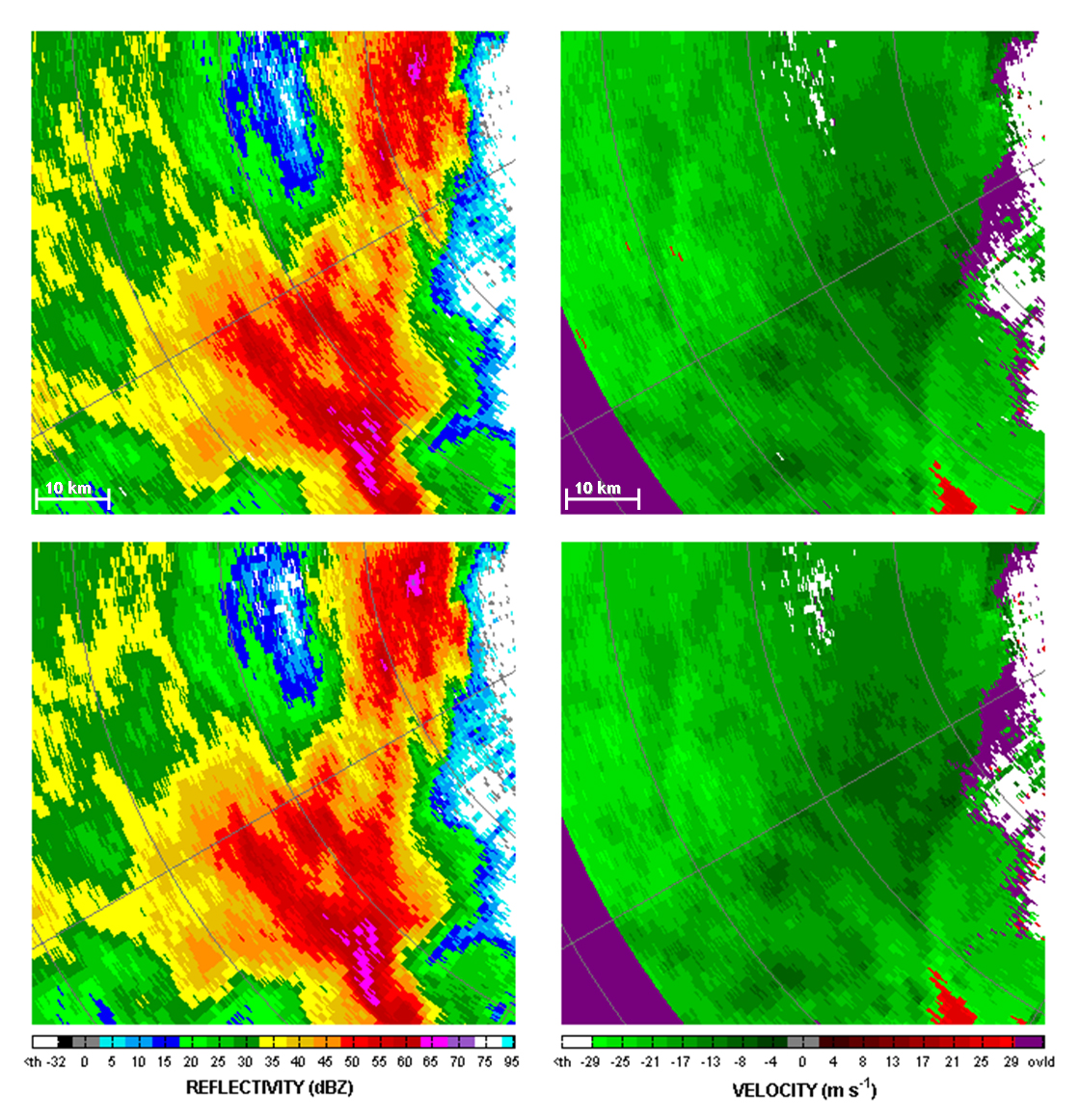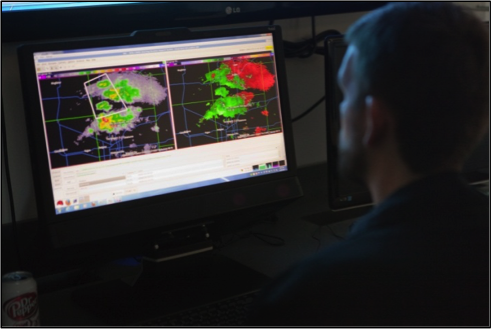
One question driving research with the Phased Array Radar (PAR) is whether faster data updates will increase warning lead time. To begin answering this question, NSSL will conduct the first experiment to directly compare how forecasters issue warnings based on data provided at current radar update rates, with warnings issued based on faster data updates provided by Phased Array Radar (PAR) technology.
The project is part of the 2010 Phased Array Radar Innovative Sensing Experiment (PARISE) beginning the second week in April.
Teams of forecasters will use two different PAR data sets. One will be with the fast update time typical of the PAR, and the other will be PAR data, but updated at the WSR-88D rate.
“This gives us a basis from which we can compare warning lead times – no differences in data, just update time and the warning decision process used by each team,” says Pam Heinselman, research meteorologist at NSSL and a leader of the project.
This will be a meaningful study with the warning lead-time and warning decision process examined from a direct radar comparison.
Since 2007, NSSL has invited NWS forecasters to participate in experiments designed to demonstrate and provide user feedback on PAR weather surveillance capabilities. The evaluations of PAR data given by previous participants have positively impacted PAR research and development.


